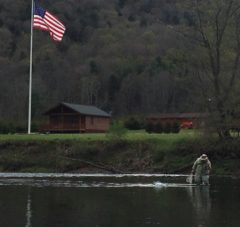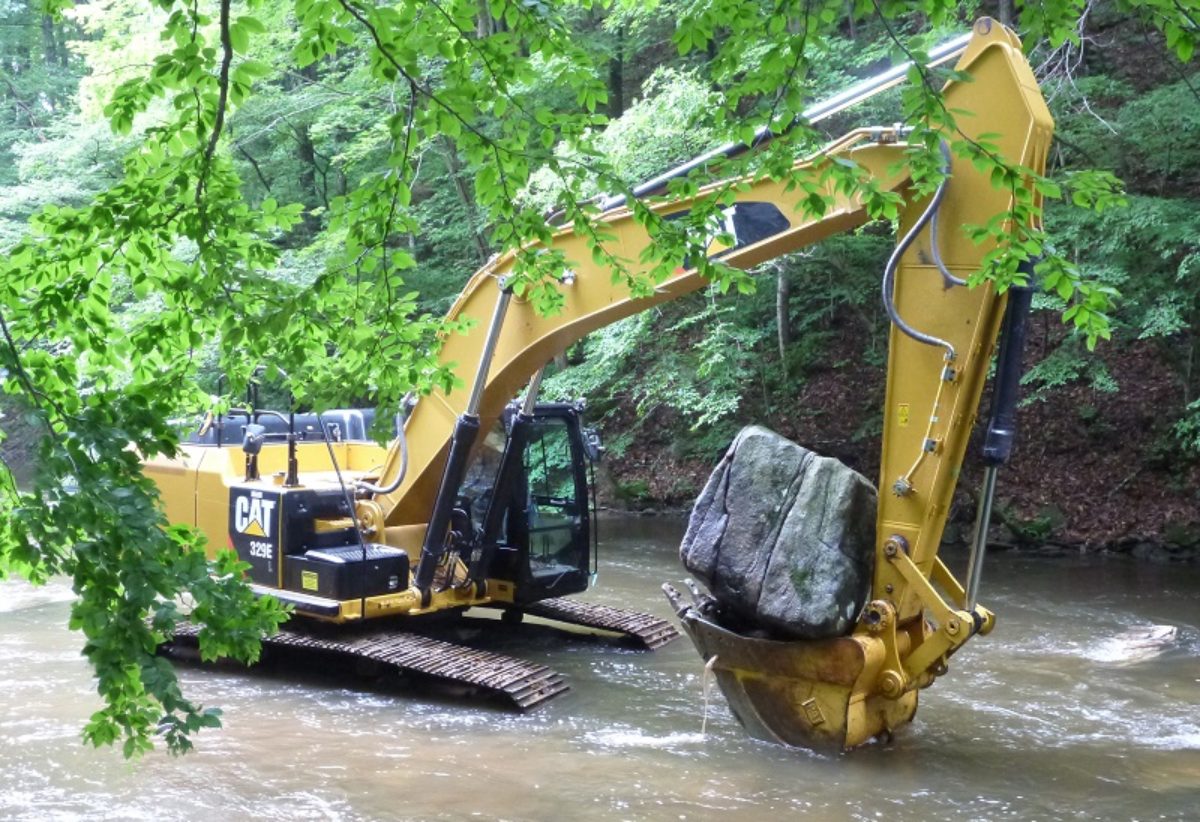Several environmental groups have joined together in planning for a September project along the Pootatuck River intended to improve that stream’s habitat for wild brook trout, with the goal of increasing the native trout population there.
The physical improvement project is planned for the “left bank” of the Pootatuck River, located just upriver of the Pootatuck’s confluence with its tributary, Deep Brook. In riverine terms, the left bank refers to the left bank of the river when looking downriver. Work is planned to improve about 165 linear feet riverbank overall.
The construction is planned for September, a month when the river typically has a low water level, allowing simplified low-water access for the heavy equipment that will temporarily be positioned on the riverbed.
At a recent meeting of the Inland Wetlands Commission (IWC), Michael Jastremski, who is the Housatonic Valley Association’s (HVA) watershed conservation director, described the planned project to IWC members. The Pootatuck Watershed Association (PWA), which is sponsoring the riverbank project, has hired Mr Jastremski as its project manager. The Pootatuck River is in the Housatonic River watershed.
The Candlewood Valley Chapter of Trout Unlimited, a coldwater fisheries conservation group, also is participating in the trout habitat project, as is the Newtown Forest Association.
The project budget is approximately $50,000 in private funds. The Town of Newtown plans to make an in-kind contribution of roughly $2,000 to the project in the form of providing tree trunks with attached root wads, plus some large boulders, and town workers’ labor costs.
Mr Jastremski said May 13 that 10-foot-long tree trunk sections that have the dead tree’s root wad still attached to the trunk will be buried horizontally and perpendicularly along the riverbank, with a small fraction of each tree trunk’s root wad exposed at the riverbank at the river’s high-water level. Boulders also will be placed along the riverbank.
The root wads will provide shelter and protective cover for the native trout that live in the river, with the intent of providing physical conditions conducive to their longevity and eventual reproduction. The riverbank’s geometry also will be improved, with stable shallow slopes created to replace currently unstable vertical riverbank sections.
Also, large boulders will be positioned in excavations on the riverbed to create riverine pools, where trout would gather.
Trout Scapes River Restoration LLC of Bozeman, Mont., has been hired for technical planning and to perform the heavy construction required for the project.
Following the earthmoving aspects of the riverbank project, willow and dogwood trees will be planted alongside the river to improve trout habitat by providing shade to keep the water cool in the summertime.
“The whole idea is to work with the stream to replicate natural conditions” that are beneficial to trout, Mr Jastremski said.
The area where the project will occur is part of a Class 1 Wild Trout Management Area, as designated by the state Department of Energy and Environmental Protection (DEEP). It is one of nine such areas in Connecticut where trout populations are able to sustain themselves by natural reproduction. The presence of brook trout indicates excellent water quality. Recreational fishing in the area is allowed on a catch-and-release basis.
Mr Jastremski explained that DEEP wants those participating in the trout habitat project to be on the lookout for wood turtles, a protected species that lives in the area
Due to the nature of the planned work, the project requires approvals from DEEP, the state Department of Agriculture for access to the river, and the US Army Corps of Engineers.
Joe Hovious is the PWA’s vice president as well as a member of Trout Unlimited’s board of directors.
Mr Hovious said May 14 that after the construction work is done, there will be a need for volunteers to help plant the shade trees along the riverbank. Such tree planting has occurred in the area in the past as part of a long-term effort to improve the trout habitat along the river.
By: Andrew Gorosko, Newtown Bee, Newtown, CT

